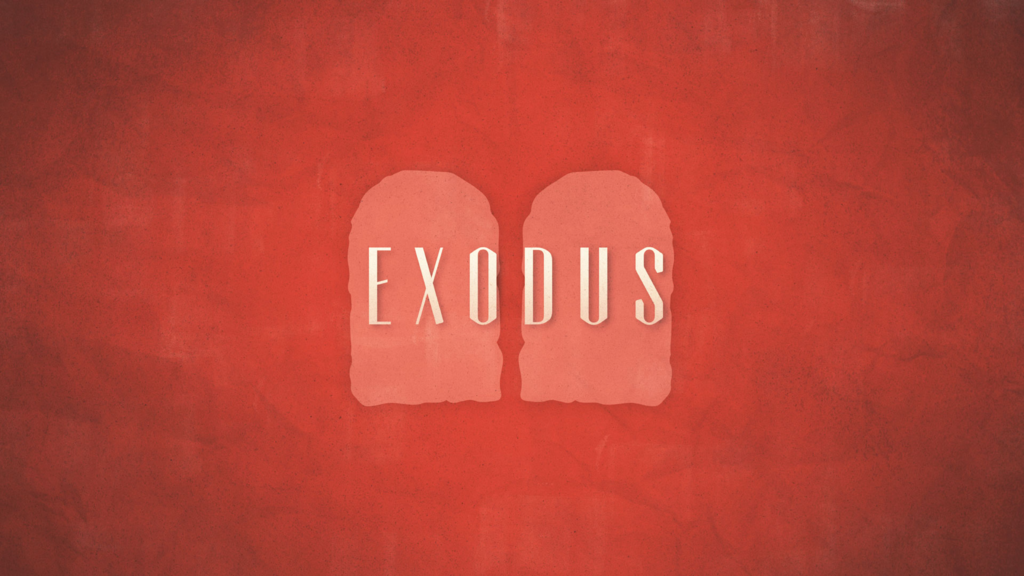
01 Feb Exodus
Exodus In Brief
Exodus: The Book of Departure
“Therefore, say to the Israelites: ‘I am the Lord, and I will bring you out from under the yoke of the Egyptians. I will free you from being slaves to them, and I will redeem you with an outstretched arm and with mighty acts of judgment.'” (Exodus 6:6)
Major Theme:
Exodus chronicles the enslavement, deliverance, and early experiences of the people of Israel as they journey from Egypt to Canaan, the Promised Land. The book highlights God’s intervention on behalf of His chosen people and their formation as a nation under His guidance.
Background and Purpose:
The book of Exodus presents the story of God’s actions to liberate the Israelites from enslavement in Egypt and shape them into a nation. Moses is the central figure in this narrative, chosen by God to lead the Israelites out of Egypt, through the miraculous parting of the Red Sea, and into the Sinai Peninsula. While at Mount Sinai, God delivers the Ten Commandments to Moses and instructs the Israelites to construct the Ark of the Covenant, which is to be housed in the Tabernacle. The purpose of Exodus is to demonstrate God’s faithfulness to His covenant with Abraham and his descendants and to underscore the formation of the Israelite nation under God’s guidance and protection.
Author:
Although the author of the book of Exodus is not explicitly named, both Jewish and Christian traditions attribute the first five books of the Bible, known as the Pentateuch, to Moses. It is believed that Moses was divinely inspired to record the events and laws contained within these books.
Date:
The exact date of the writing of Exodus is unknown. It is possible that Moses kept a record of God’s actions and commandments during the Israelites’ journey, which he later compiled in the plains of Moab before his death. The most widely accepted date for the writing of Exodus is around 1400 BC.
Brief Outline:
- The Israelites Delivered from Egypt (Exodus 1:1-15:21): This section recounts the Israelites’ enslavement in Egypt, the birth and early life of Moses, and the ten plagues that ultimately lead to the Israelites’ freedom.
- Traveling from the Red Sea to Mount Sinai (Exodus 15:22-18:27): This portion of the book details the Israelites’ journey from the Red Sea to Mount Sinai, where they encounter various challenges and receive divine assistance, including the provision of manna and water.
- Giving the Law and the Covenant (Exodus 19:1-24:18): In this section, the Israelites arrive at Mount Sinai, where God delivers the Ten Commandments to Moses and establishes a covenant with the people of Israel.
- The Tabernacle and Instructions for Worship (Exodus 25:1-40:38): This final part of Exodus provides detailed instructions for the construction of the Tabernacle and its furnishings, as well as guidelines for worship and the establishment of the priesthood.
Important Events:
- The Israelites are enslaved in Egypt
- The ten plagues are unleashed upon Egypt
- The institution of the Passover
- The escape from Egypt and the parting of the Red Sea
- The giving of the Ten Commandments at Mount Sinai
Christ in Exodus:
- The Passover Lamb (Exodus 12:3) serves as a type of Christ, who is later referred to as the Lamb of God. The blood of the Passover Lamb, which saved the Israelites from the final plague in Egypt, foreshadows the saving power of Christ’s sacrificial death on the cross.
- Manna (Exodus 16:4), the miraculous bread provided by God to sustain the Israelites during their journey in the wilderness, is another type of Christ. In the New Testament, Jesus refers to Himself as the “bread of life” (John 6:35), emphasizing that He is the ultimate source of spiritual nourishment and life for those who believe in Him.
Additional connections between Christ and Exodus include:
- The role of Moses as a mediator between God and the Israelites is a type of Christ, who serves as the ultimate mediator between God and humanity (1 Timothy 2:5). Just as Moses interceded on behalf of the Israelites, Jesus intercedes for believers before the Father (Hebrews 7:25).
- The bronze serpent raised by Moses in the wilderness (Numbers 21:4-9) foreshadows Christ’s crucifixion. Jesus refers to this event in John 3:14-15, explaining that just as the Israelites who looked upon the bronze serpent were healed from the deadly snake bites, those who look to Jesus and believe in Him will have eternal life.
These connections between the events and figures in Exodus and Christ reveal the divine plan for the redemption of humanity through Jesus. By linking the story of the Israelites’ journey to the Promised Land with the broader narrative of God’s salvation plan, Exodus lays the groundwork for understanding the continuity and fulfillment of God’s promises in the New Testament through the life, death, and resurrection of Jesus Christ.


No Comments